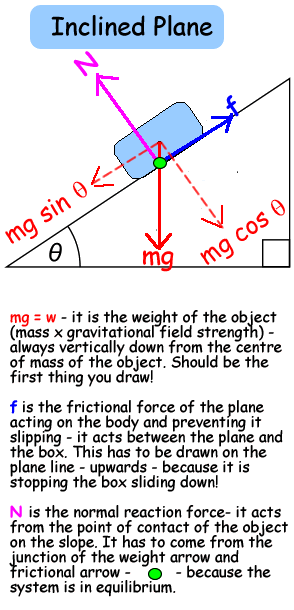    |
||||

The Inclined Plane |
||||
|
The inclined plane is a simple machine. It is a flat surface whose endpoints are at different heights. When moving an object up an inclined plane rather than just lifting it vertically, the amount of force required is reduced at the expense of increasing the distance the object must travel. The mechanical advantage of an inclined plane is the ratio of the length of the sloped surface to the height it spans. As it makes a right angled triangle we can think of that as the hypotenuse divided by the opposite side to the angle of inclination.This is the reciprocal of the sine of the angle between the plane and the horizontal. It is interesting to note that due to the conservation of energy, the same amount of mechanical energy is required to lift a given object by a given distance regardless of the route.So if you carry it up a gradual slope or up a steep ladder you will do the same amount of work. But when you push an object up the slope you have to take into account work done against friction. You have to expend more energy because of that. To summarise: the inclined plane allows the work to be done with a smaller force exerted over a greater distance... but don't forget friction!
When resolving forces acting on an object situated on a plane you resolve parallel and perpendicular to the plane rather than horizontally and vertically.
By resolving weight into components that are parallel and perpendicular to the plane we see that: mg sin mg cos |
||||
 |
||||




